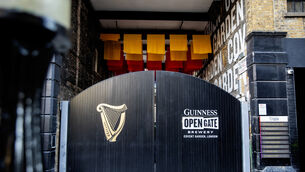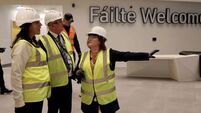1916: It took time for a true impression to emerge

Although inevitably shaped by the period in which it was written, the historiography that has emerged over the past century has gradually transformed our understanding of the Irish revolution.
The earliest accounts were mostly written by republicans. Popular memoirs by IRA leaders such as Dan Breen and Tom Barry, or the stories recorded by Irish Volunteers throughout the country, presented the conflict as a straightforward struggle for independence between the Irish people and British imperialism.
The Civil War was overlooked, as were the perspectives of those who did not experience the preceding “four glorious years” as a period of liberation. This republican narrative was reinforced by school textbooks, as well as by State commemoration, which centred on the sacrificial gesture of Easter 1916 rather than the more divisive violence that followed.
From the 1970s, when professional historians belatedly turned their attention to the period, more critical and challenging interpretations emerged.
Local studies provided a more complex and less romantic picture of the forces that shaped the conflict at its grassroots. Revisionist accounts emphasised social and political divisions rather than unity, and explored how factors other than patriotism, such as generational conflict, agrarian and sectarian tensions, and rising social frustrations, motivated many.
It was shown that civilians formed almost half of the revolution’s victims, and that combatants more often died, unarmed, at the hands of hidden assailants than as a result of the daring ambushes at crossroads depicted by revolutionary memoirs. Against the backdrop of the Troubles, the acrimonious debates that followed revealed a gulf between popular belief and scholarly perspectives.
Despite recent controversies centred on revolutionary violence in Cork, this gap has narrowed considerably, as is demonstrated by the transformation of public attitudes to Irish soldiers in the First World War.
The emergence of a more nuanced understanding of the past is also evidenced by the changing nature of State commemoration (even if this also reflects new imperatives resulting from the Good Friday Agreement, including a problematic tendency to understate the enmities that shaped ‘our shared past’).

Despite criticism of aspects of the Government’s commemorative programme, the adoption of a ‘decade of centenaries’ incorporating the campaign for Home Rule, and Irishmen’s experiences of the First World War, alongside the War of Independence, represents a more pluralistic approach than previous major commemorations. So too does the greater attention focused on working-class struggle, the experiences of women, and campaigns for social reforms.
Another important development is the widening of access to archival sources through such projects as the digitisation of the Military Service Pensions Collection, Bureau of Military History and 1901/1911 Census, as well as the availability of a much wider range of first-hand accounts of the period. Like all valuable sources, these voices from the past complicate the picture.
One of the greatest impediments to historical understanding is our knowledge of what happened next. Contemporary accounts remind us how those who lived through this era acted in the expectation of different outcomes.
Prior to the outbreak of the First World War, most Irish people — including republicans — anticipated a Home Rule parliament. The conflict that many feared in 1913 was not between separatists and the British authorities, but between the Ulster Volunteer Force and the British army, or between Catholic nationalists and Protestant unionists in the North.
Few expected a lengthy war when John Redmond declared his support for Irish enlistment in the British army in September 1914.
The value of autobiographical accounts does not rest solely on the factual detail they record. Like most sources, they are unreliable, reflecting bias, subjectivity, and the changing perspectives brought by subsequent events.
For the same reasons though, they allow us to retrieve past mentalities, and to trace the evolving memory of the revolution.
Rather than reflecting triumphalist perspectives, these memoirs were often framed by the optimism and idealism that preceded the revolution, and the frustrations and disappointments that followed it.
Although many republicans remained reluctant to discuss the past, in the 1940s and 1950s — as their generation began to pass into history — several thousand felt compelled to record their experiences for posterity.

The realisation that the veterans of the War of Independence, ordinary people who achieved remarkable feats, were no longer remembered outside their own townland, and the concern that their sacrifices were no longer appreciated or even understood, prompted Ernie O’Malley to record the testimony of hundreds of unknown soldiers in the hope that their stories could be “made into a patchwork quilt from memory”.
Greater familiarity with these sources — including the range of evocative first-hand accounts spanning the revolutionary decade from the Ulster crisis to the Civil War published as part of UCD Press’s new Centenary Classics series — should complicate as well as inform commemoration in 2016.
Although the achievements of the founding generation will be honoured and, inevitably, appropriated, the urge to celebrate independence should be tempered by an unsentimental understanding of the process by which it was achieved.
PS O’Hegarty’s belief that the violence of the revolution killed the spirit of the national movement was shared by many after the Civil War. Violence accelerated the pace of political change, resulting in a level of independence that few anticipated before 1914, but it also narrowed the space for an accommodation between the two Irelands.
Despite the relative success of the republican campaign, a significant moment in the global development of anti-imperialism, Irish revolutionaries did not achieve their central aims: the restoration of Gaelic, complete separation from England (for many, the essence of republicanism), and a united Ireland.
Nor did they fully comprehend the contradictions between the last and first two of these aims. Independence did not always live up to expectations, as the enthusiasm of the revival gave way to a conservative ethos.
The revolution produced losers as well as winners, including the minorities on both sides of the border left, in Churchill’s words, “to stew in their own juice”. It is increasingly clear from the Military Service Pensions collection that the losers included the many veterans who endured hardship after, as well as during, the conflict.
Few, though, regretted their attempt to change their world. Despite the complexities of the period, and the limitations of their achievements, the wealth of first-hand testimony which continues to emerge testifies to that generation’s willingness to struggle against more powerful forces in pursuit of the republic of their dreams.
Fearghal McGarry teaches history at Queen’s University Belfast. This article is adapted from his introduction from UCD Press’s Centenary Classics series (www.ucdpress.ie). His latest book is The Abbey Rebels of Easter 1916: A Lost Revolution, (Gill and Macmillan, 2015).















